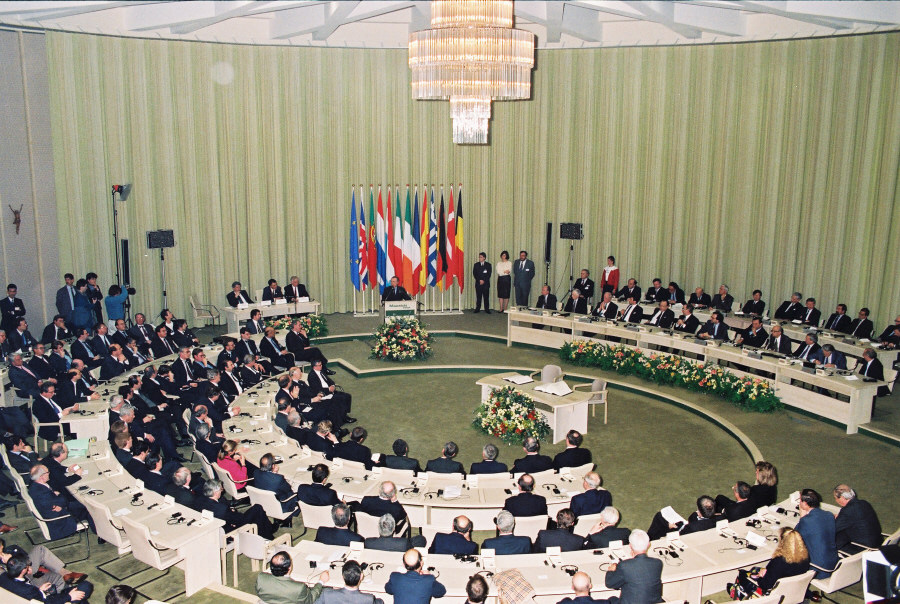On Feb. 7, 1992, twelve member states signed the Treaty on European Union in the city of Maastricht in the Netherlands. More commonly known as the Maastricht Treaty, it created the European Union (EU) based on three pillars. They were the European Communities (changing the name from European Economic Community), unified security and foreign policies, and better cooperation in justice and domestic affairs.
The Maastricht Treaty created a new monetary union. This paved the way for a future common currency, today known as the euro. Its goal was to maintain price stability, remove trade barriers, and set rules (also known as the Maastricht criteria) for current and future member states to keep the economy healthy. All citizens were given EU citizenship.
The twelve countries that signed the treaty were the United Kingdom, Ireland, Belgium, Denmark, Spain, France, Germany, Greece, Luxembourg, the Netherlands, Italy, and Portugal. The treaty was officially enacted on Nov. 1, 1993. In June of 1992, voters in Denmark defeated a referendum for fear of sacrificing their sovereignty. They approved a revised version the following May. The United Kingdom only joined on the condition that they be exempted from the social policies and adoption of the euro.
Today, there are 27 countries and over 440 million citizens in the EU. In 2016, the United Kingdom passed a referendum to exit the EU. After four years of negotiating, they officially withdrew on Jan. 31, 2020. They are the only country to leave the EU.

